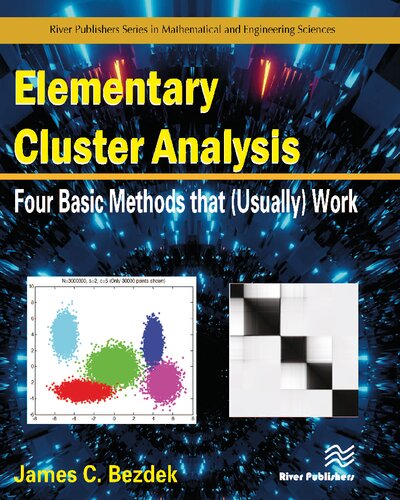

Most ebook files are in PDF format, so you can easily read them using various software such as Foxit Reader or directly on the Google Chrome browser.
Some ebook files are released by publishers in other formats such as .awz, .mobi, .epub, .fb2, etc. You may need to install specific software to read these formats on mobile/PC, such as Calibre.
Please read the tutorial at this link: https://ebookbell.com/faq
We offer FREE conversion to the popular formats you request; however, this may take some time. Therefore, right after payment, please email us, and we will try to provide the service as quickly as possible.
For some exceptional file formats or broken links (if any), please refrain from opening any disputes. Instead, email us first, and we will try to assist within a maximum of 6 hours.
EbookBell Team

4.8
24 reviewsChapters 1–5 are devoted to basic topics and ideas that are shared by all classical clustering methods.
Devising a useful solution that discovers cluster structure in a real problem requires some knowledge about
a lot of things that might not be obvious to a casual user. There are some specific methods and algorithms
in Part I, but they reside here mainly as examples which illustrate underlying notions about a topic that is
important in the context of clustering. With this in mind, here is a preview of Part I.
Chapter 1 discusses the basic ideas underlying cluster analysis from the human point of view (HPOV).
I firmly believe that most users of computational clustering algorithms (more or less) transfer what they
think they know about clusters of real objects to computational counterparts built from data processing. But
there are some very important differences between the human and computer points of view, and Chapter 1
paves the way for understanding them.
Chapter 2 discusses the foundations of fuzzy sets and models. The material in this chapter is quite basic
and is needed to understand fuzzy clustering, which is covered in some detail in Chapter 6. Fuzzy models
are compared to the other longstanding approach to modeling uncertainty – viz., probability theory. Don’t
look for a winner – they are both winners!
Chapter 3 is a counterpoint to Chapter 1 that discusses some ways to think about what it means to ask
computers to look for clusters in numerical data; in short, how to think about clusters from the computer
point of view (CPOV). Understanding the difference between the human and computer points of view is a
great help when you are trying to make a computer find clusters.
Chapter 4 defines and illustrates the three main topics of batch (as opposed to streaming) cluster analysis:
(tendency assessment, partitioning, and cluster validity). There is also a subsection about visual assessment
of clustering tendency. Trying to understand what your data might contain before you look
…